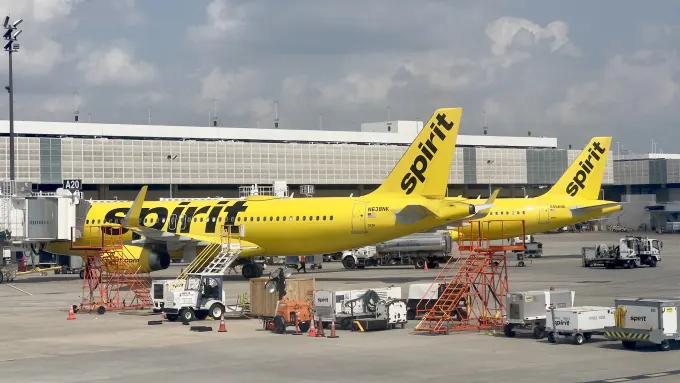Spirit Airlines filed for bankruptcy protection Monday, as mounting losses, unaffordable debt, increased competition for bargain-seeking airline passengers and the inability to merge with other airlines left it little choice.
The airline said it will continue to operate as it restructures its debt.
“Guests can continue to book and fly without interruption and can use all tickets, credits and loyalty points as normal,” it said in a statement.
Airlines and other companies in the United States frequently file for bankruptcy and emerge stronger on the other side of the process. Most major US airlines, including the three largest — American Airlines, United and Delta — have filed for bankruptcy at some point in the past 25 years.
Spirit’s statement said that as a result of its bankruptcy and negotiations with existing creditors it will be able to emerge early next year with reduced debt and increased financial flexibility that will “position Spirit for long-term success and accelerate investments providing guests with enhanced travel experiences and greater value.” It added that the creditors had agreed to pump an additional $300 million into the airline to fund its operations through the bankruptcy process.
But it is also possible that Spirit (SAVE) will end up being bought by another airline or be forced to liquidate. Numerous airlines, including American, have had their assets purchased out of bankruptcy and merged with a different airline.
In recent years Spirit has attempted two mergers, one with fellow bargain carrier Frontier Airlines and once with JetBlue Airways, which topped the offer from Frontier only to have its purchase blocked by a federal judge on antitrust grounds
Spirit is known for its very low base fares. Its average domestic round-trip economy fare so far this year is $136, not including taxes and fees, according to data from Cirium, an aviation analytics firm. That’s 61% lower than the US industry’s average, and 69% less than the average on the four major US airlines — American, United, Delta and Southwest.
Spirit’s problems could lead to higher fares across the industry. Its low-fare model had prompted major airlines to also offer no-frills “basic economy” seats on their planes. If it is forced to scale back its schedule or cities that it serves, goes out of business or gets purchased by a larger airline, that pressure to offer lower fares will be reduced.
A new deal to buy Spirit and merge it into a larger airline might not run into the same issues this time, given that its bankruptcy filing would raise the possibility of liquidation as an alternative. It is also possible that President-elect Donald Trump’s Justice Department, which enforces antitrust laws, might not be as opposed to corporate mergers as the Biden administration has been. Several deals that might have gone through in the past have been challenged on antitrust grounds in the last four years.
Spirit said last week in a Securities and Exchange Commission filing that it is in “productive” negotiations with its lenders to restructure its debt, which comes due in 2025 and 2026. Its previous filings disclosed it had $3.1 billion in long-term debt on its balance sheet.
As a result of the bankruptcy filing, Spirit expects to be delisted from the New York Stock Exchange “in the near term,” it said Monday, adding that its common stock is expected to be canceled and have no value as part of the restructuring




